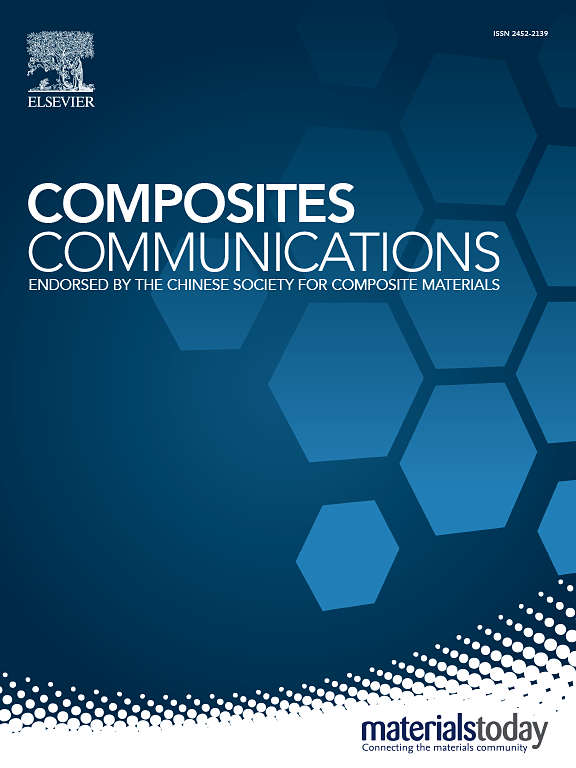Simultaneous enhancement of strength and toughness of polybutylene terephthalate composites via oriented shish-kebab crystals induced by oriented polytetrafluoroethylene nanofibres
IF 6.5
2区 材料科学
Q1 MATERIALS SCIENCE, COMPOSITES
引用次数: 0
Abstract
Balancing strength and toughness remains a significant challenge in composite materials research. Here, we quantitatively analysed the effect of the content of oriented fibres and the crystal orientation degree on the mechanical properties of a composite to overcome this limitation. Polytetrafluoroethylene (PTFE) was fibrillated in situ and then oriented by the shear flow field within a Polybutylene terephthalate (PBT) matrix. The impact of the oriented PTFE fibres on the rheological properties, crystallisation behaviour, crystal morphology and mechanical performance of PBT was systematically examined. The introduction of PTFE nanofibres into the PBT matrix promoted the development of oriented shish-kebab structures in the composite and enhanced the crystallinity of PBT. When the oriented PTFE nanofibre content was less than 1.5 phr, it was positively correlated with the crystal orientation degree of PBT. The oriented shish-kebab structures formed by the addition of 1.5 phr oriented PTFE nanofibres (sample PBT (PTFE1.5)) yielded the optimal improvement in mechanical properties. Compared with the tensile and impact strengths of pure PBT (spherulite structure), those of PBT (PTFE1.5) increased by 37.15 % and 180.94 %, respectively. This research offers an innovative, feasible strategy enabling polymers to enhance the strength and toughness of PBT composites simultaneously, with potential applications in high-performance domains, such as automotive and precision instrumentation.
求助全文
约1分钟内获得全文
求助全文
来源期刊

Composites Communications
Materials Science-Ceramics and Composites
CiteScore
12.10
自引率
10.00%
发文量
340
审稿时长
36 days
期刊介绍:
Composites Communications (Compos. Commun.) is a peer-reviewed journal publishing short communications and letters on the latest advances in composites science and technology. With a rapid review and publication process, its goal is to disseminate new knowledge promptly within the composites community. The journal welcomes manuscripts presenting creative concepts and new findings in design, state-of-the-art approaches in processing, synthesis, characterization, and mechanics modeling. In addition to traditional fiber-/particulate-reinforced engineering composites, it encourages submissions on composites with exceptional physical, mechanical, and fracture properties, as well as those with unique functions and significant application potential. This includes biomimetic and bio-inspired composites for biomedical applications, functional nano-composites for thermal management and energy applications, and composites designed for extreme service environments.
 求助内容:
求助内容: 应助结果提醒方式:
应助结果提醒方式:


